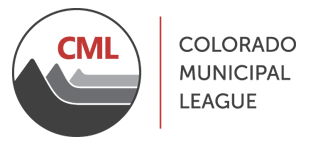Knowledge Now: Opportunity Zones
In This Section
Knowledge Now
March 2019
By Jana Persky, Colorado Office of Economic Development & International Trade Opportunity Zone program director
Opportunity Zones were enacted as part of the 2017 tax reform package (Tax Cuts and Jobs Act) to address uneven economic recovery and persistent lack of growth that have left many communities across the country behind. Through Opportunity Zones, there is now a federal tax incentive for investors to support distressed communities through private equity investments in businesses and real estate ventures. The incentive is deferral, reduction, and potential elimination of certain federal capital gains taxes.
Currently, there are trillions of unrealized capital gains sitting on balance sheets across the country. Although the U.S. Treasury has not provided complete guidance yet, an Opportunity Zone (OZ) market is already beginning to develop, and much of this capital is actively seeking projects. In order to successfully attract capital to projects that a community wants and that will benefit its residents, stakeholders will need to organize themselves to build prospectuses, structure deals and add incentives that are attractive to investors, and work to engage investors. The State of Colorado has set up an Opportunity Zone Program Office, housed in the Office of Economic Development & International Trade (OEDIT) to support communities in this work.
In particular, there are five key considerations for communities to think about:
1. Be Proactive.
A city or town needs to take a seat at
the table to ensure that investments
available are the ones desired by its
residents. The best way to do this is to
make projects attractive and easy to
find. This will ensure that investments
happen with the community and not to
the community.
2. Urgency is Key.
To realize the full benefits of the
incentive, an OZ investment must occur
before the end of 2019. While OZ
investments will continue after this
date, communities and projects that
organize themselves quickly will have
an easier time attracting capital.
3. Think like an Investor.
Focus on projects that will help
investors realize a return, and
consider what your city or town can do
to increase that return even more. It is
important to note that the OZ incentive
will not make a bad project good, but
instead will help bring a good project
over the finish line.
4. Layer Additional Programs
and Incentives.
Consider what else your city or town
can add to make a project as attractive
as possible to investors. OZ incentives
coupled with Enterprise Zones, New
Market Tax Credits, tax-increment
financing, Low-Income Housing Tax
Credits, land donations, fast-tracked
permitting, and other economic
development tools can make an
investment more appealing and easier
to attract investors.
5. Opportunity Zones are
Another Tool in the Toolkit.
There will be some projects that are not
well suited for OZs, and there are some
problems that OZs cannot solve. Think
about how OZs can fit in with existing
economic development tools and be
used strategically to increase
community investments.
In Colorado, OZs may help address a number of challenges:
- promoting economic vitality in parts of the state that have not shared in the general prosperity over the past few years;
- funding the development of workforce and affordable housing in areas with escalating prices and inventory shortages;
- funding new infrastructure to support population and economic growth;
- investing in startup businesses that have potential for rapid increases in scale and the ability to “export” outside of Colorado; or
- upgrading the capability of existing underutilized assets through capital improvement investments.
The state is fully committed to empowering communities to take advantage of this incentive through technical support, grant funding for projects, and connecting capital and projects at a dedicated website, co-invest.co. For more information and resources, visit choosecolorado.com/oz.
